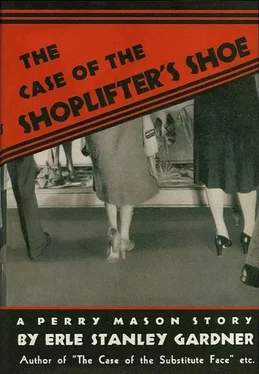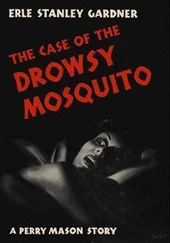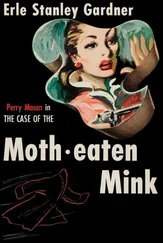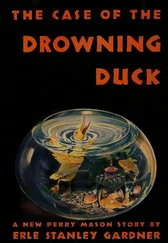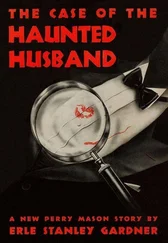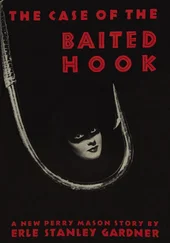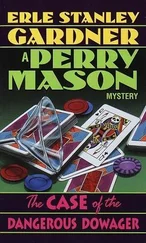She smiled serenely. “I can take it,” she said.
The clerk called the names of twelve jurors. Sampson advised the prospective jurors of the nature of the case. The judge asked a few routine questions, then turned to the attorneys. “Proceed, gentlemen, with such questions as you have touching upon the Qualifications of prospective jurors.”
Mason, on his feet, scrutinized the jurors as though searching for something in each face. Then he smiled and said, “Your Honor, the defendant has no questions to ask of these jurors. We have no challenges for cause.”
Sampson sighed and settled down to an examination of the jurors, realizing with each question that he had been forced into a position of seeming to distrust these men and women. Yet, once having embarked upon such a policy, he dared not change. And, since the defense had given him no lead by its questions, he was forced to plug along, doggedly determined to bring out the facts, whether they knew the defendant or counsel for the defendant, whether they had read of the facts, or purported facts, in the newspapers, whether they had formed or expressed any opinion. Once, to his embarrassment, he disclosed that one of the jurors, having read the newspapers, had concluded Mrs. Breel was guilty. But that juror, meeting Perry Mason’s disarming smile, promptly asserted that he could and would lay aside such opinion if he was actually sworn to act as a juror, and would try the case solely and impartially upon the evidence introduced.
Sampson knew, of course, that Perry Mason would excuse this juror on a peremptory challenge, and the other members of the panel would understand the exercise of that challenge. But Sampson felt, somehow, as though he were doing Mason’s work for him.
Eventually, his examination drew to a close. He passed the jury for cause, and, satisfied that Mason would exert his peremptory on the biased juror, passed for peremptory. Mason said, “Your Honor, I was satisfied with the jury when I first saw them, and I’m still satisfied with them. I pass my peremptory. Swear theory.”
Once more, Sampson experienced a vague feeling of uneasiness. He had expected at least half a day to be consumed in the examination of jurors, but now he found himself swept into the trial after less than an hour, and, somehow, felt that he was on the defensive. However, as he warmed to his opening speech before the jury, he regained his confidence. The mere recital of the facts arrayed against the defendant was sufficient to reassure any prosecutor.
The defendant had been acquainted with the decedent. She had been in the neighborhood — in fact, directly in front of the decedent’s house — at approximately the time of the murder. Robbery had been the motive for the murder. The defendant had in her possession the gun with which the murder had been committed. Moreover — and realizing that the prosecution might have some difficulty in actually proving that the handbag was the property of the defendant, Sampson stressed this point particularly — the shoe worn by the defendant had been stained with human blood — the blood of the decedent. The person who had murdered Austin Cullens had stood over the body, taking gems from a chamois-skin belt. In doing this, that person had left the telltale red smears of footprints near the body of the deceased. The jurors would be shown photographs of tracks of footprints in the hallway. And then they would be shown the left shoe which had been worn by the defendant at the time she was brought to the hospital. That shoe, standing by itself, would be sufficient to warrant a conviction of first-degree murder.
Sampson thanked the jury, and sat down. Mason reserved his opening statement, and Sampson called, as his first witness, an acquaintance who testified briefly, and without objection or cross-examination, that he had known Austin Cullens in his lifetime; that Austin Cullens was dead; that he had seen the body of Austin Cullens at the time of the postmortem; that the body on which the autopsy surgeon had been working was that of Austin Cullens, who had lived at 9158 St. Rupert Boulevard.
Sampson called the autopsy surgeon, Dr. Carl Frankel. Mason stipulated his qualifications, subject to the right of cross-examination, and Dr. Frankel described the postmortem, the course of the fatal bullet, and the cause of death. “You may cross-examine,” Sampson said.
Mason asked casually, “What time was the postmortem performed, Doctor?”
“Around three o’clock in the morning.”
“You recovered the fatal bullet which had caused the death of Austin Cullens?”
“I did.”
“What did you do with it?”
“I gave it to Sergeant Holcomb of the homicide squad, who was standing at my side.”
“Let’s see,” Mason said musingly, “three o’clock in the morning. You had two postmortems to perform by that time, didn’t you, Doctor?”
“I did.”
“The other one being that of George Trent, who had also been shot?”
“Yes, sir.”
“And you performed both of those postmortems at the same time?”
“No, sir, I performed the postmortem on Austin Cullens first, and then the autopsy on George Trent.”
“But you performed the postmortem on George Trent immediately after you had finished with that of Austin Cullens?”
“That’s right.”
“And Sergeant Holcomb was present at both examinations?”
“Yes, sir.”
“Did he leave the room at any time?”
“What’s that got to do with it?” Sampson asked.
“Merely trying to get the picture,” Mason said affably. “I want to find out what became of the bullets.”
“You’ll find out when we put Sergeant Holcomb on the stand,” Sampson said.
“Well,” Mason observed, “I think if the doctor answers this question, that will conclude my cross-examination.”
“No,” Dr. Frankel said, “Sergeant Holcomb did not leave the room. He was present at my side during both of the postmortems.”
“That’s all,” Mason said.
“Call Harry Diggers,” Sampson said.
Diggers took the witness stand. Clearly, almost photographically, he described operating his car on St. Rupert boulevard. He had just passed Ninety-First Street and was about midway in the block. There had been a blue sedan with a crumpled left rear fender parked at the curb. This sedan had suddenly lurched into motion and swerved sharply to the left. The witness had pulled his car to the right to avoid a collision. At that moment, the defendant had jumped out from the curb, to run directly in front of his headlights. She had flung up her hands as though to ward off the car. The witness had swung his car sharply to the left, but the front end had missed the defendant, and the running board had struck her leg and knocked her down. She was unconscious. He had started to take her to the nearest hospital, but other motorists, who had driven up, advised him to let the ambulance which had been summoned take the responsibility. Diggers had found her bag lying beside her, with a gun protruding from it. He had picked the bag up, and had insisted on having its contents inventoried, at first by bystanders, and then, when he realized the nature of the contents, by the ambulance crew. He read the inventory, and the number of the gun, from his notebook, where he had scribbled them down.
Sampson watched the jury intently. As Diggers read out the numbers, he saw a certain hardness creep into the jurors’ eyes. Then their glances strayed from the witness to the defendant. He knew that symptom only too well. Let Mason go ahead and pull his bag of tricks. When jurors lean forward in their chairs to listen to damaging testimony, then, with hard faces, look with steely indifference at the defendant, the verdict is in the bag.
With the conclusion of Diggers’ direct examination, the court took its usual midday recess, and Sampson tried hard to keep from swaggering as he walked from the courtroom.
Читать дальше
